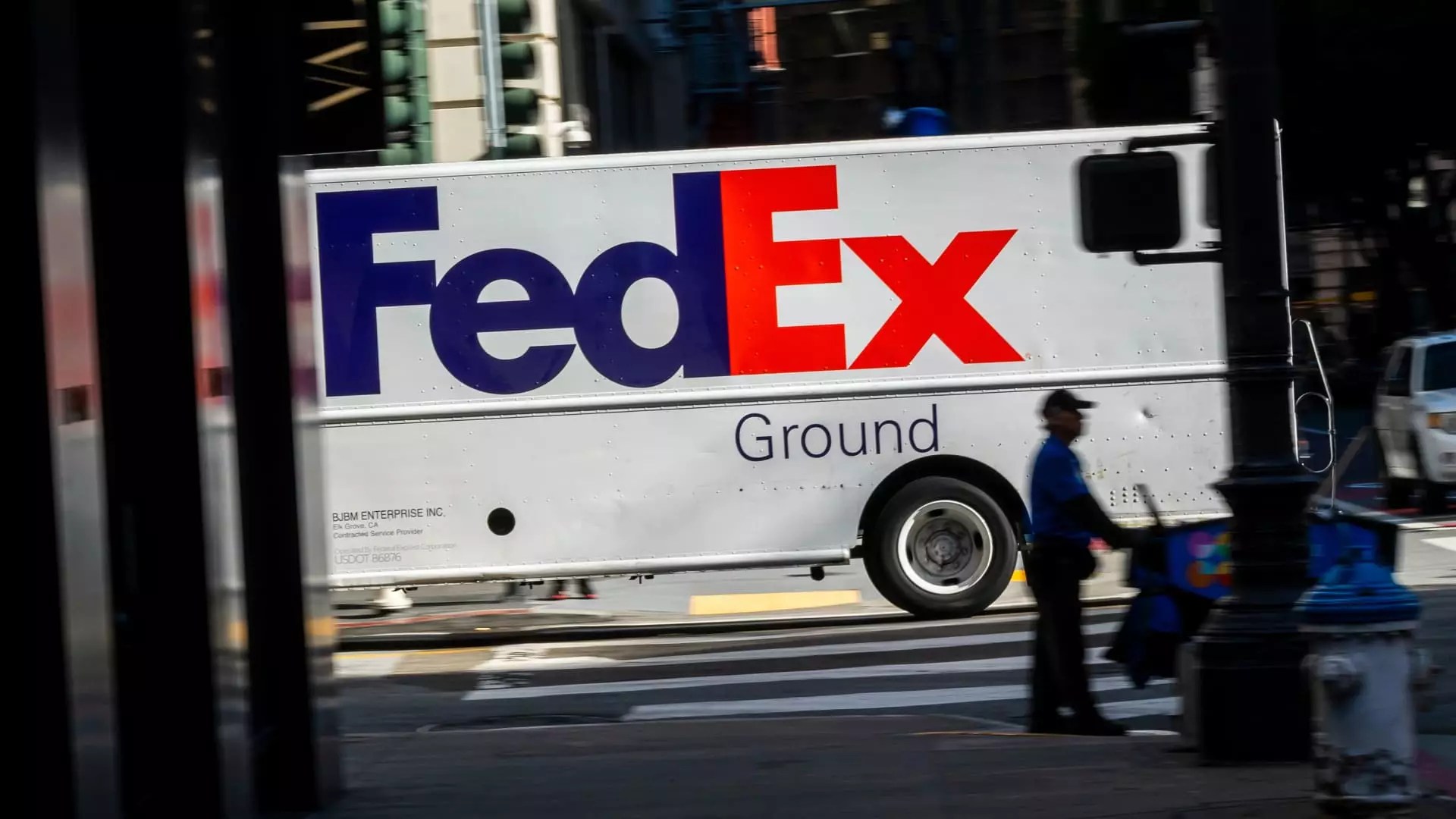FedEx has recently announced that it has surpassed its ambitious cost-reduction target, achieving a remarkable $4 billion in savings. CEO Raj Subramaniam confidently declared this milestone while addressing the media, emphasizing the company’s dedication to integrating its operations and continuously enhancing its cost efficiency. However, one must question whether this aggressive cost-cutting strategy is sustainable in the long term or merely a stopgap to placate investors in the face of growing economic challenges. Indeed, while achieving this structural goal is commendable, the strategic implications surrounding such fundamental alterations in operations raise red flags about the company’s future.
Investor Sentiment: A Jarring Drop
Despite the positive narrative surrounding these gains, FedEx’s stock took a noticeable hit, dropping around 5% during after-hours trading following the earnings report. The anticipated earning moderation—where quarterly profit guidance fell short of Wall Street expectations—left investors feeling uncertain. Such volatility showcases a troubling disconnect between performance signaling and investor confidence, which is even more pronounced given that FedEx shares have plummeted over 18% year-to-date. This pattern invites scrutiny over whether the leadership’s transformative vision aligns with market realities and investor sentiment.
Quantitative Metrics: Mixed Results
In the latest fiscal quarter, FedEx reported an impressive earnings per share (EPS) of $6.07, exceeding analyst expectations of $5.84. Revenue also climbed to $22.22 billion, surpassing predictions of $21.79 billion. However, before we jump for joy, it is essential to recognize that the overall year-over-year revenue growth was marginal at best. While FedEx has demonstrated a commendable rise in U.S. daily package volume—up 6% compared to the previous year—this growth is not necessarily indicative of robust economic health. The gains in specific market segments, such as a 10% increase in U.S. ground home delivery volume, could merely represent market share shifts rather than a genuine increase in demand.
Repercussions of Rising Costs
FedEx’s capital expenditures also tell a revealing story: $4.1 billion spent in fiscal 2025 is a stark reduction from $5.2 billion in its previous fiscal year, marking the lowest capital spending ratio in the company’s history. One has to wonder if such drastic cuts can eventually hinder operational capability and adaptability in a rapidly shifting logistics landscape. With the looming specter of potential inflationary pressures and supply chain complications, can FedEx afford to keep tightening its financial belt? This dilemma underscores the precarious balance that companies must maintain between short-term savings and long-term growth strategies.
Future Outlook: Uncertain Terrain Ahead
Looking to the future, FedEx has set its sights on achieving an additional $1 billion in cost reductions in the upcoming fiscal year. While it’s crucial to pursue efficiencies within operations, the company’s silence on full-year fiscal earnings forecasts raises eyebrows. Uncertainty is inherent in business, but an absence of clarity from leadership can breed discontent among investors who require reassurance amidst a backdrop of declining stock performance. Managing investor expectations in a time of growth versus recession is a tightrope walk that FedEx must navigate carefully.
The Legacy of Fred Smith: A New Era?
The recent passing of FedEx founder Fred Smith raises further questions about the company’s future direction. As the architect of its extraordinary growth, Smith understood the ebbs and flows of logistics better than most. What is now left in the hands of Raj Subramaniam remains to be seen. Can the company continue to thrive amid headwinds, or will it falter without the visionary guidance of its founder? The transformative initiatives currently at play are a testament to an evolving FedEx, but whether this evolution will stand the test of time remains a pivotal point of concern for the organization, its employees, and its stakeholders alike.

